

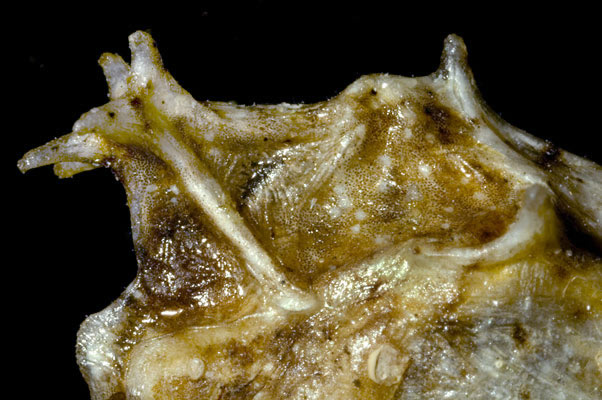 Coronet
Coronet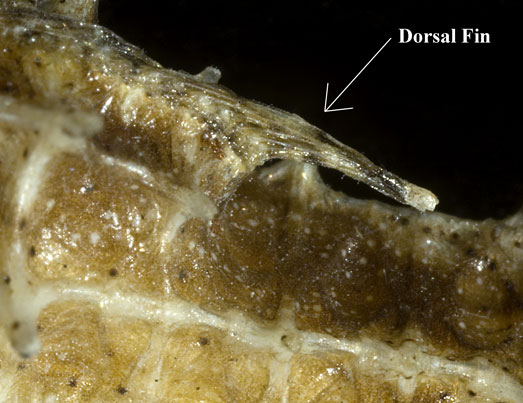
 Eye
Eye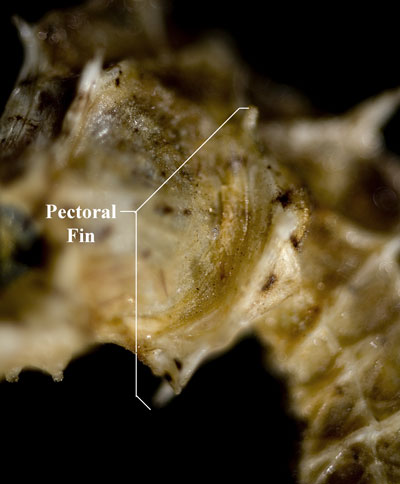
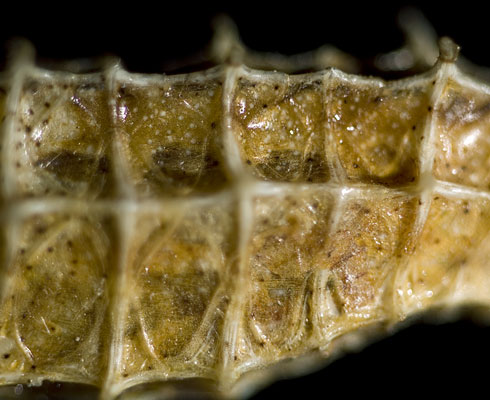 Bony Plates
Bony Plates 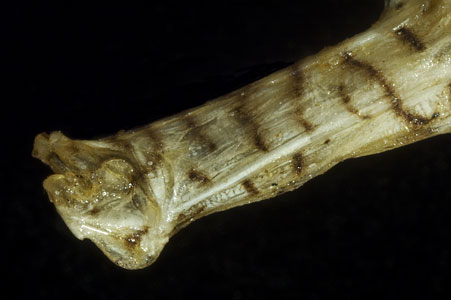 Snout
SnoutSeahorse Facts
Classification: Kingdom: Animalia, Phylum: Chordata, Class: Osteichthyes, Order: Gasterosteiformes, Family: Syngnathidae, Genus: Hippocampus, and many species.
Seahorses are a marine fish belonging to the genus Hippocampus of the family Syngnathidae. They have rectangular bony plates that cover their body. Unlike most fish they do not have scales. There are about 35 different species of seahorses spread all over the world in temperate and tropical coastal waters. They will only eat live food such as brine shrimp and can eat up to 3,000 brine a day. Also seahorses have no teeth and swallow their food whole with powerful suction through their snout. They live in seaweed beds and are very slow swimmers. To hide from predators they grow long skin appendages so that they blend in better with the algae. They will even let encrusting organisms settle on them.
Basic Anatomy
The crown of the seahorse head is known as the coronet, and is almost as distinctive as a human thumbprint. The seahorse has a dorsal fin located on the lower body and pectoral fins located near the gills on its head. The dorsal fin is a small appendage that helps move the seahorse forward. The turning and side to side movement is controlled by the pectoral fins. The eyes of the seahorse are interesting because each eye moves independently of the other. The size of a seahorse can range from a quarter of an inch to a foot or more depending on the species.Male or Female?
Female seahorses generally have vibrant coloring and are larger in size in order to attract a mate. Male seahorses often have more subdued coloring and are smaller in size. The most distinctive characteristic is their birthing pouch located below the chest area. Unfortunately this cannot be clearly discerned with dried specimens
Reproduction
Seahorse reproduction is unusual because the male is the one that becomes pregnant. Seahorses are monogamous and will only mate with one partner. Monogamy is particularly rare for fish so this is yet another trait that makes the seahorse unique. Evidence suggests that this may be because when seahorses stays with one partner they get better at producing babies as a team. The male becomes pregnant when a female deposits her eggs into his pouch. The mating pair entwine their tails and the female connects a tube called an ovipositor to the male's pouch. Once the eggs are moved into the pouch the male then fertilizes them. While pregnant he monitors the salinity within the pouch to match the salinity of his environment. Each pregnancy lasts about two to three weeks and will vary depending on species.
Decline in Population
Seahorse populations are declining dramatically, 25 to 50 percent in five years. The seahorse is used in traditional Chinese medicine, and as many as 20 million seahorses may be caught each year and sold for this purpose. However it's not just Chinese medicine driving the demand for seahorses. They are also used as medicines by the Indonesians, the Central Filipinos, and many other groups around the world. Also hundreds of thousands of seahorses are used each year for the aquarium trade driven primarily by North American consumption. More importantly the seahorses that are being caught have not yet reached sexual maturity which means they are not reproducing in the wild and populations are not being replenished.
About the Photographs: Specimens and Setup
Unfortunately the beautiful colors and the difference in male and female genitalia could not be clearly represented, as I was only able to use dried scientific specimens. However you are still able to observe some basic seahorse anatomy and qualities. I photographed the dried seahorse specimens in lab with 105mm macro lens and a 38mm thimble lens using bellows. I lit the specimens with fiber optic lights and took exposures of 1 sec and higher. My camera was mounted to a copy stand and tethered to a computer to decrease vibration.Sources
“Kingdom of the Seahorse.”WBGH.1997.<http://www.pbs.org/wgbh/nova/seahorse/>
"Seahorse”<http://www.enchantedlearning.com/subjects/fish/printouts/Seahorsecoloring.shtml>
“Sea Horses.”<http://www.seahorses.de/seahorses.htm>
“Seahorse.”Wikipedia.2006.<http://en.wikipedia.org/wiki/Seahorse>
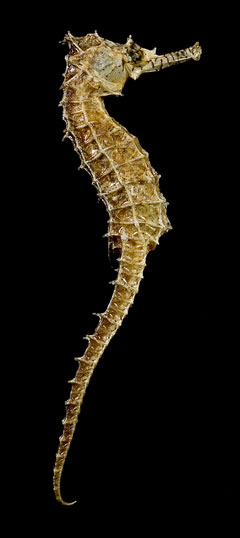
 |